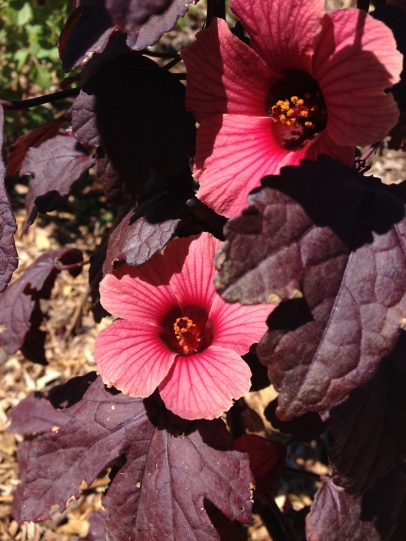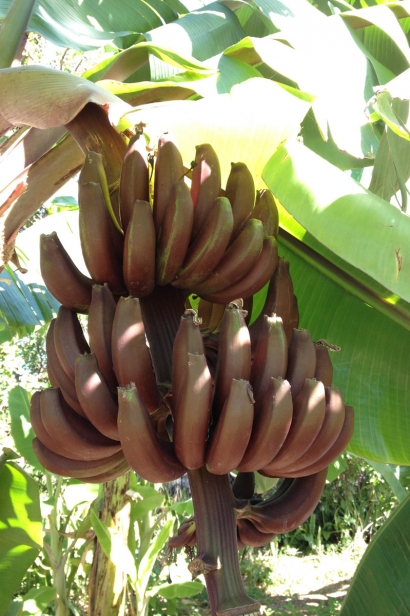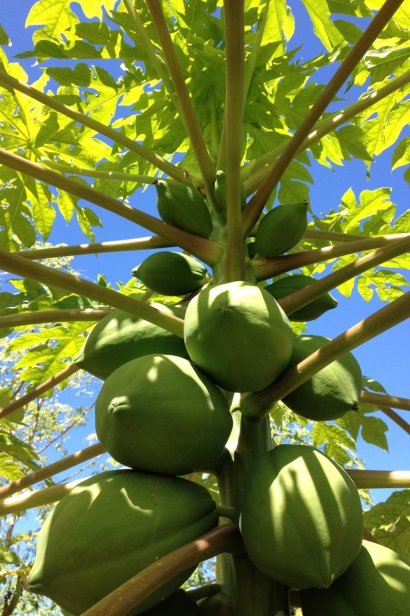Year-round Edibles: Grow Your Food Forest
Food forests mimic an actual forest, so they have a more natural appearance than gardens of annual veggies and herbs. They can also include plants that are beneficial to the soil and wildlife. In some regards, they require less maintenance than annual veggie/herb gardens because they include perennial plants that don’t require annual planting. When food forests mature, they create shade and make their own mulch when trees drop old leaves, so there tends to be less weeding. However, newly planted food forests need some weeding and mulching, occasional fertilization and pest management.
Fruit Trees
Avocado Plant this large tree at least 15-20 ft from other large trees. Harvest fall and winter. An interesting fact: Avocados don’t ripen when left on the tree and only start to ripen when off the tree.
Banana Grows in full or part sun. Plant in soil rich with organic matter and give ample water, mulch and fertilizer regularly. It’s best to let only 3-4 trunks grow at once for any given group. Too many stems growing at the same time lead to poor production and health. Fruits multiple times a year.
Black sapote (Chocolate Pudding Fruit, Chocolate Persimmon) Great for anyone who loves chocolate. Let the fruit ripen to the point of looking almost rotten (very mushy).
Carambola (Star fruit) Keep small with pruning, easy to grow and fruits multiple times a year.
Custard apple Deciduous and can be kept smaller. One of the most delicious tropical fruits, very sweet and dessert-like. Harvested in spring.
Guava Has been grown in Florida since the 19th century. Grows to a small-medium size tree. Often requires pest management to be productive.
Mango Very well adapted for South Florida. Easy to grow. Some varieties can grow into large trees, while others grow as small compact trees, so check the variety to determine the size for planting in the garden. Fruits in summer (varies according to variety).
Mulberry The easiest-to-grow berry in South Florida. ‘Everbearing’ variety grows as a small tree or large bush. Easy to propagate from cuttings ½ in-1in wide. Birds like to eat them, too. Not recommended to plant close to hardscaping as the berries will dye surfaces beneath them purple.
Papaya Only productive for 2-3 years and fruits throughout the year. Fits well planted in narrow spaces, and fruits best when planted close to south-facing walls that absorb heat from sun. Plant multiple plants since some are male and will not produce fruit. Often ideal for spaces in between other fruit trees, since once the other trees need space in a few years, the papaya will not be productive and can be taken down.
Passionfruit – Aggressive vine with beautiful flowers. Requires a large trellis to grow on in order to be productive. Large trellises usually are in the form of arbors, fences (chain link is ideal) or trees that can handle a vine growing through it. Yellow and purple fruit varieties are most common. Some varieties are not open pollinated, so plant multiple plants to ensure good fruiting.
Pineapple Relative of the bromeliad. One plant can take about two years to produce a pineapple, so plant a group of 10 or more plants for more regular fruiting throughout the year.
Perennial Veggies and Herbs
African Blue Basil Direct seeded in garden. The most hardy basil – can live multiple years and grows from cuttings. Healthy plants grow larger than most basil plants, 3-4 ft wide and tall.
Chives Easy to grow in rich soil. Can be completely cut back to ground level and will resprout full new growth in 1-2 weeks.
Comfrey Medicinal plant that improves soil by accumulating nutrients in its leaves by “mining” nutrients from the subsoil with its deep roots. Can grow 3-4 ft across.
Cranberry Hibiscus Red leafed-plant has sour leaves that make a tasty and colorful addition to salads. Pink flowers in the winter are also edible. Can grow 6-8 ft tall.
Cuban Oregano Very easy to grow, often used with rice and beans. Can grow large and spread, so allow ample space when planting.
Katuk Grows as a bush or small tree with edible leaves that can be used raw or cooked.
Lemongrass Very easy to grow, requires ample room and can grow 4-5’ across.
Mint Most varieties spread as ground covers, though a couple varieties grow as bushes.
Moringa Considered a superfood because of the high nutritional content of the leaves. Grows easily from cuttings over 1” thick in a wide range of soils. Can grow into a medium tree about 15 ft tall, but can be cut back to any size.
Okinawan Spinach Attractive spreading bush with leaves that are green on top and purple on the other. Easy to grow from cuttings. Leaves can be eaten raw or cooked.
Pigeon Pea Nitrogen-fixing small tree with “peas” that can be dried, shelled and cooked. Often planted in between fruit trees. Can be cut back and left on the ground to act as a mulch and add fertility.
Sweet Potato Grown from stem cuttings or small pieces of sweet potato. Very aggressive vine usually grown on the ground. Give it ample space or it will grow on top of other plants. Most productive in full sun. Harvested throughout the year, but usually 3-6 months after planting. Potatoes grow underground, so you must dig to find them. Start digging around the base of the stems where they were initially planted.
Got an edible gardening question? Email Dylan.







